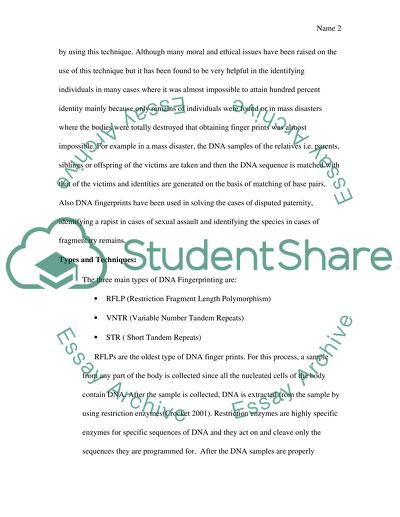DNA Fingerprinting Essay Example | Topics and Well Written Essays - 1000 words. Retrieved from https://studentshare.org/biology/1459254-dna-fingerprinting
DNA Fingerprinting Essay Example | Topics and Well Written Essays - 1000 Words. https://studentshare.org/biology/1459254-dna-fingerprinting.


